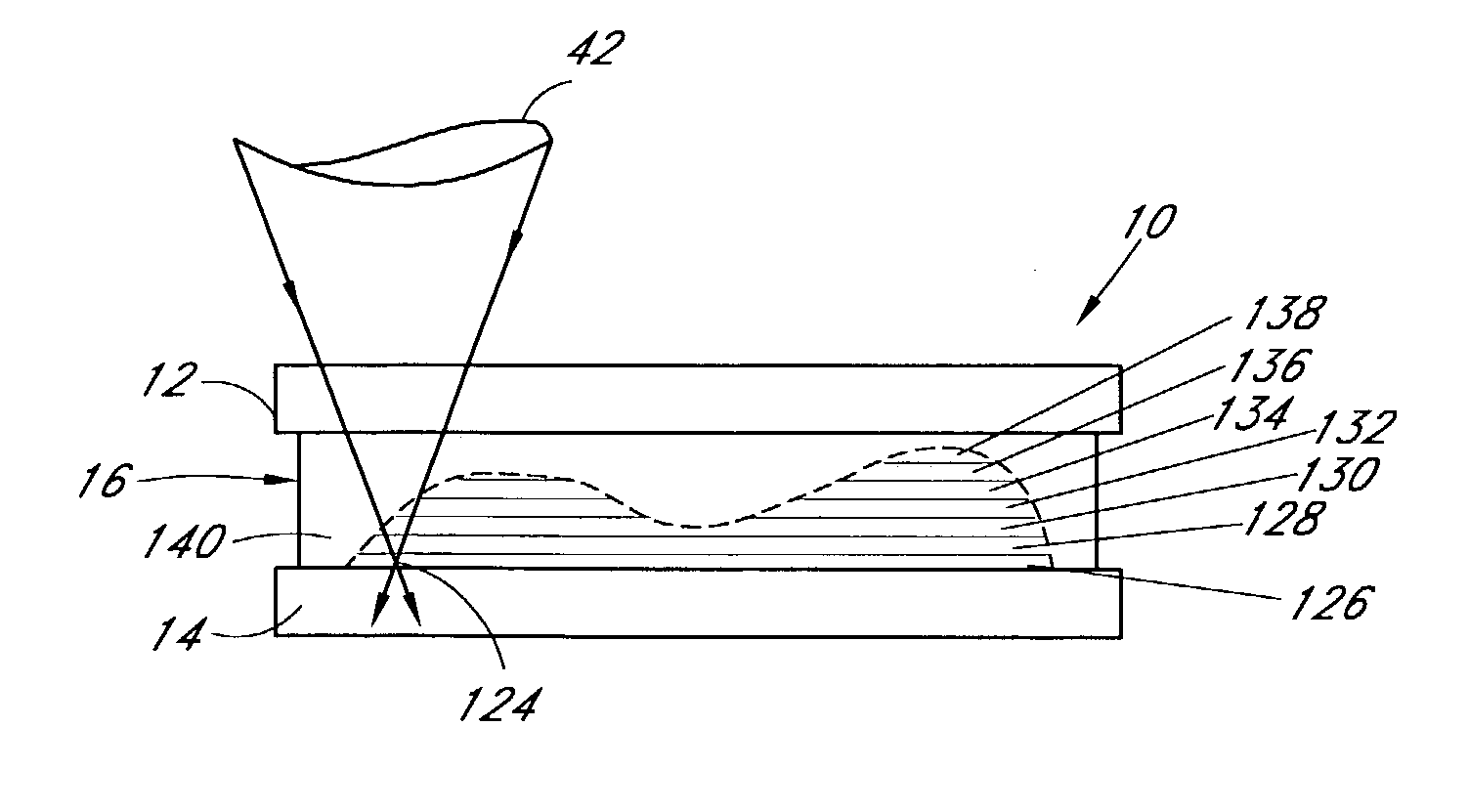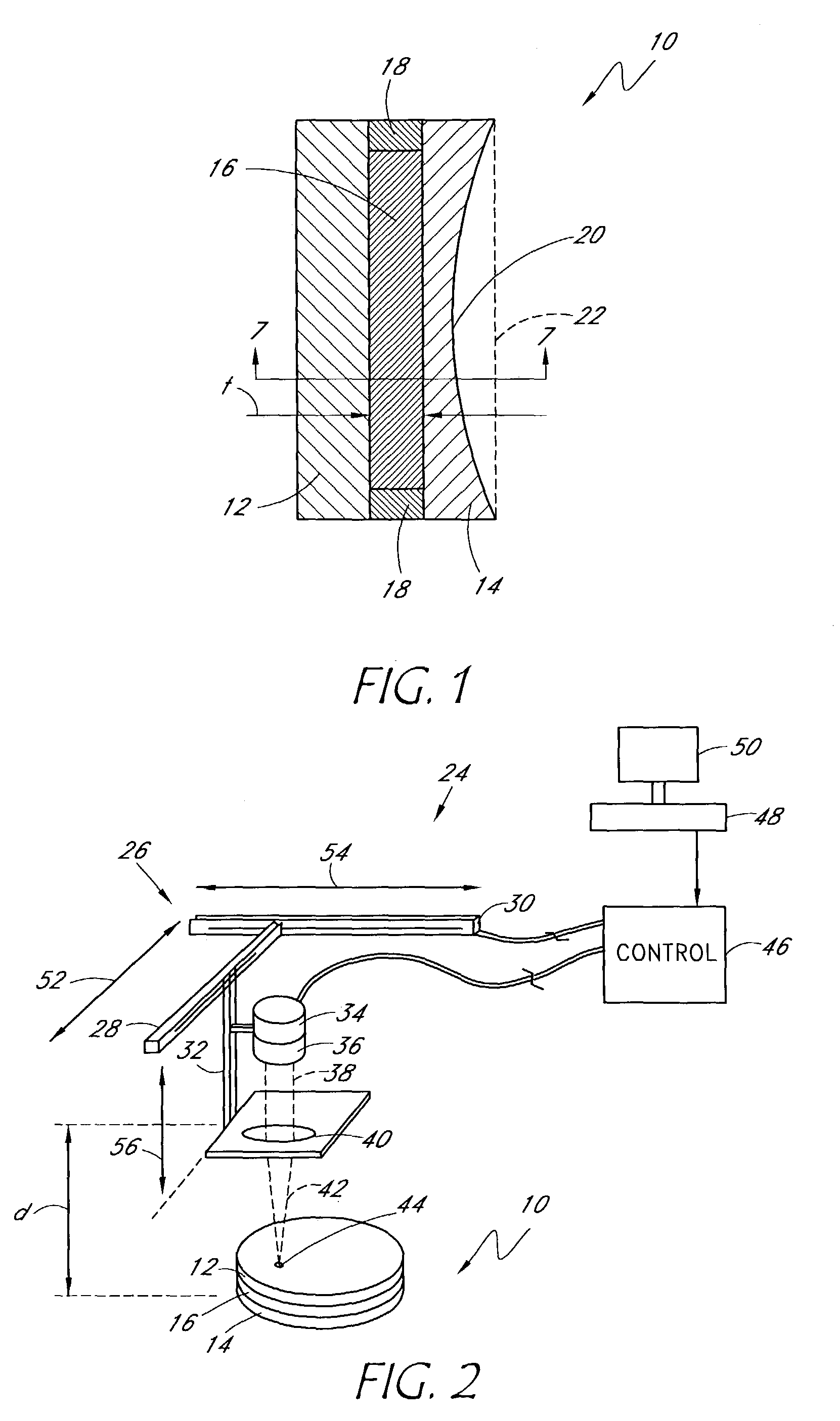Apparatus and method of fabricating a compensating element for wavefront correction using spatially localized curing of resin mixtures
a technology of compensating elements and resin mixtures, applied in the field of optical elements, can solve the problems of inability to correct imperfections, expensive and time-consuming, and limited optical systems including the human ey
- Summary
- Abstract
- Description
- Claims
- Application Information
AI Technical Summary
Benefits of technology
Problems solved by technology
Method used
Image
Examples
Embodiment Construction
[0030]Referring initially to FIG. 1, a correcting element of the present invention is shown, generally designated 10. As shown, the correcting element 10 includes a first rigid or flexible transparent plate 12, a second rigid or flexible transparent plate 14, and a layer of resin mixture 16 sandwiched therebetween. If desired, a barrier 18 can be used to contain the resin mixture 16 between the plates 12, 14 prior to, and following, the below-described curing of the resin mixture.
[0031]The term “resin mixture,” as used herein, is intended to include light-curable resins comprised of one or more monomers, pre-polymers, polymers and polymerization initiators. The refractive index of the resin changes as the resin is cured, and it can be made to vary between locations within the resin layer depending on the spatial extent of curing of the resin mixture, as more fully disclosed below. The extent of curing is determined by the percentage of cross-linking between the monomers within the r...
PUM
| Property | Measurement | Unit |
|---|---|---|
| wavelengths | aaaaa | aaaaa |
| cone angle | aaaaa | aaaaa |
| length | aaaaa | aaaaa |
Abstract
Description
Claims
Application Information
 Login to View More
Login to View More - R&D
- Intellectual Property
- Life Sciences
- Materials
- Tech Scout
- Unparalleled Data Quality
- Higher Quality Content
- 60% Fewer Hallucinations
Browse by: Latest US Patents, China's latest patents, Technical Efficacy Thesaurus, Application Domain, Technology Topic, Popular Technical Reports.
© 2025 PatSnap. All rights reserved.Legal|Privacy policy|Modern Slavery Act Transparency Statement|Sitemap|About US| Contact US: help@patsnap.com



